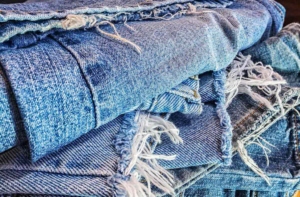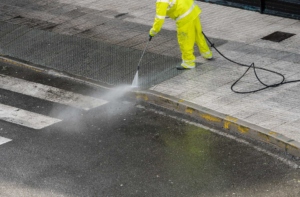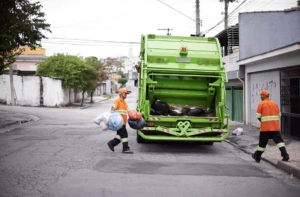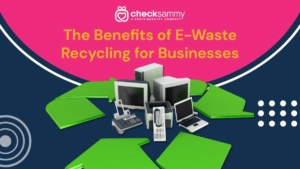How Retailers Can Recycle Products Without Devaluing Their Brand: Debranding
Creating a brand that people trust is no easy feat. Protecting that brand is even harder. That’s why so many retailers are apprehensive about things like textile recycling and donating their unsold goods to secondhand shops.
Conversely, traditional disposal methods are coming under public scrutiny. Plus, with the mounting problem of overflowing landfills and climate change front of mind, it’s clear the usual disposal methods aren’t sustainable — literally.
Whether you sell clothes, beauty products, or candles, it’s important to be cautious with how you dispose of your unsold or damaged merchandise to protect your brand. This is where debranding comes into play.
The Disposal Conundrum
Most retailers either toss out their unused merchandise or incinerate it to help maintain their brand’s value. Luxury brands spend a lot of time making their products exclusive, and if they just donated unsold goods, they’d risk devaluing their brand.
Even fast-fashion and budget-friendly brands don’t want large amounts of their products going to secondhand shops or recycling bins because it’s a signal to the public that their brand and products are undesirable.
Of course, that’s not the case. The reality is that retail and fashion are fast and getting faster every day. Clothing seasons are getting shorter, consumer preferences change rapidly, and frankly, especially with today’s supply chain issues, it’s more cost-effective to order more from the manufacturer now and deal with excess inventory than it is to underorder.
Simply tossing out or burning your merchandise doesn’t bode well for your brand either, though.
Brands like Amazon, Burberry, Nike, H&M, Urban Outfitters, Michael Kors, Eddie Bauer, Chanel, Louis Vuitton, and more have all come under fire in recent years for their textile disposal practices.
There’s also the issue of social media, like the common TikTok trend of shaming corporations for destroying their unused products and the permanently trending hashtags like #RetailMadeMeDoIt, which illustrate that the general public isn’t okay with these practices (especially younger generations like Gen Z).
What should a brand do when both options seem to result in damaging the brand? Debranding is the answer.
The Benefits of Debranding
Debranding is simply the process of removing your company’s brand and any identifying markers from an item before donating, recycling, or disposing, and it offers several benefits to retailers.
- Protect Your Brand’s Value: By removing the label(s) from your items, you can participate in things like textile recycling and donating without worrying about how that might affect consumer opinion.
- Protect Your Brand’s Public Image: By debranding, you can show the public that your company contributes to the circular economy and practices sustainability, saving you from a public relations nightmare.
- Improve ESG Scores: With debranding, you can safely pursue more sustainable practices, like donation and secondhand recycling. Then, you can report these initiatives to improve your overall ESG score.
- Decrease Your Footprint: By eliminating unsustainable practices and replacing them with sustainable ones, your company will be doing its part to contribute to a healthier, happier planet.
- Increase Your Disposal Options: When your brand isn’t in jeopardy, your options for disposal open up. By removing your company’s brand from your merchandise, you can find (and mix-and-match) the disposal methods that make the most sense for you fiscally and otherwise.
Debranding is a way to protect your brand on all fronts. It allows you to maintain your company’s image while still doing what’s right for the planet.
Getting Started with Debranding
Here at CheckSammy, we’re a technology-backed sustainability services provider with the nationwide coverage you need. We offer everything from debranding and textile recycling to waste assessments and more, so we can craft a custom solution to fit your needs.
When it comes to debranding, we work with vetted partners to source-separate the product to ensure there are no identifying pieces leftover.
Then, we use our logistical capabilities to extend and repurpose the items. We generally focus on re-use and finding a second life for debranded items, but we also offer other solutions like textile recycling.
We offer debranding for:
- Clothes
- Textiles
- Beauty Products
- Candles
- Mannequins
- Hangers
- Branded In-Store Fixtures
- And More
If you’d like more information on our debranding services, textile recycling, or other solutions, please contact us today. We’d love to develop a custom solution to meet your needs.
See Our Services
Create a custom solution to meet your waste and sustainability goals. Contact us today!
Continue reading
Dive deeper into the CheckSammy Blog by reading one of our posts below
Feeling the Pain of Higher Resident Turnover? Apartment Junk Removal Can Help
If you’re a property manager, you’ve probably had a significant increase in tenant turnover over the last couple of years. So it’s no wonder apartment junk removal may be top of mind for you right now. There are several reasons for this shift. For one, the housing market is on fire right now. In 2020 […]
Read MoreSetting Up a Community E-waste Recycling Program
E-waste is the fastest-growing municipal waste stream according to the EPA, yet e-waste recycling isn’t keeping pace. In fact, only 12.5% of all e-waste is recycled, reports the EPA. Starting a community e-waste recycling program is a terrific way to ensure hazardous e-waste, like lithium-ion batteries, doesn’t end up in your community’s landfill. Creating an […]
Read MoreWaste Management’s Role in the Circular Economy
Establishing a waste management program for your business or community is one of the best ways you can contribute to the circular economy. Here’s everything you need to know about waste management’s role in the circular economy (and how to get involved). What Is the Circular Economy? Our current economic model is all about taking […]
Read More5 Reasons to Consider a Textile Recycling Program for Your Organization
Americans sent more than 17 million tons of textiles to landfills in 2018, a volume that is only increasing every year, reports the Environmental Protection Agency. When you think about the fact that it can take over 200 years for textiles to decompose, it’s easy to grasp how large textile waste’s contribution is to the […]
Read More8 Benefits of Environmentally Friendly Power Washing Services
If you’re into maintaining the curb appeal of your business or home, then you’ve probably heard of pressure washing. Pressure cleaning involves using high-pressure water spray to remove grime, mold, dust, paint, mud, and other junk from objects or surfaces. Many people worry that pressure washing isn’t good for the environment, but this couldn’t be […]
Read MoreWhy Our Customers Love Our Full-Service Junk Removal
If you’re looking for full-service junk removal services, you’ve come to the right place. CheckSammy is a one-stop shop for all your junk removal and sustainability needs. From our affordability, simplicity, and unrivaled turnaround times to our innovative sustainability solutions and patented technology and data, it’s clear why some of North America’s biggest companies choose […]
Read MoreTips for a Stress-Free Move From An Eco-Friendly Junk Removal Company
What does an eco-friendly junk removal company know about moving? Quite a lot, actually. Moving can be an especially chaotic time. You have to pack everything up, get rid of unwanted items, clean your property, load everything up, and move your things to your new location. That doesn’t even include the unpacking and resettling period. […]
Read MoreCollege Junk Removal Tips for Student Move-In Day
As the new school year gears up, colleges across the country are looking for ways to clean up their campuses before the new year begins, and many of them want to do so sustainably. College junk removal isn’t easy, though, especially around move-in week—and when trying to do so sustainably. As students move in and […]
Read More8 Items Hospitality Businesses May Not Know They Can Recycle
One hotel guest produces 2.5 pounds of trash every single day. Just a single hotel room produces around one cubic yard of waste each month, which totals 200 gallons of waste per room every month. Most of this waste goes straight to the landfill, even though research shows that up to 60% of it is […]
Read More











